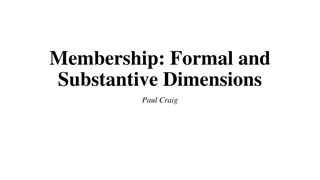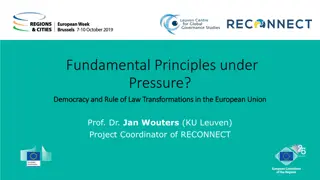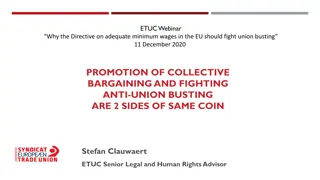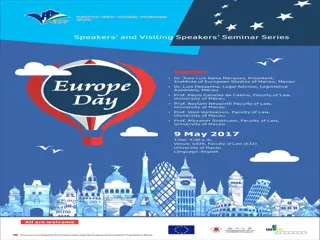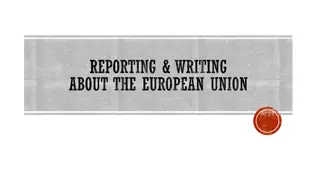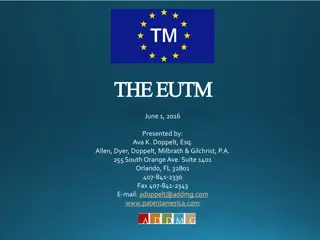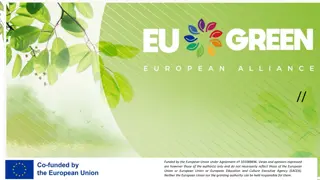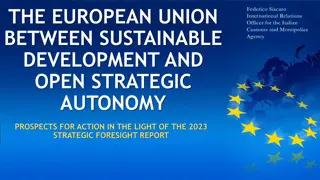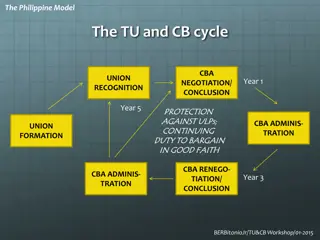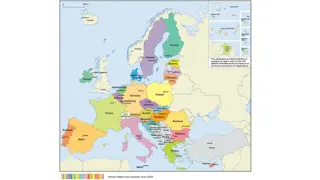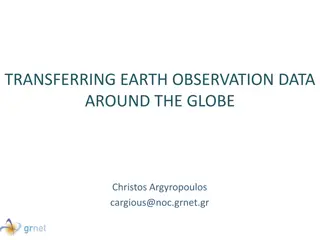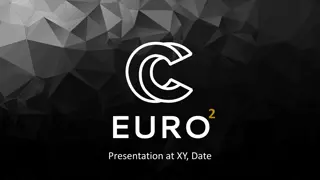Understanding the European Union: Benefits and Structure
The European Union (EU) is a confederation where member countries work together for mutual advantages, such as increased competitiveness in the world market. While the EU does not handle all government functions, it offers benefits like a common currency (Euro) for easy trade and the freedom of movement for citizens within EU nations. Learn more about the EU's purpose, comparison with the United States, member benefits, and the role of the Euro currency in this comprehensive overview.
Uploaded on Sep 14, 2024 | 0 Views
Download Presentation

Please find below an Image/Link to download the presentation.
The content on the website is provided AS IS for your information and personal use only. It may not be sold, licensed, or shared on other websites without obtaining consent from the author. Download presentation by click this link. If you encounter any issues during the download, it is possible that the publisher has removed the file from their server.
E N D
Presentation Transcript
The European Union
Teachers: Print out the following slide for each student. They should complete the questions while discussing the presentation (or as a review afterwards).
The European Union
the EU The purpose of the EU is for its members to work together for advantages that would be out of their reach if each were working alone. The EU believes that when countries work together they are a more powerful force in the world because they involve: more money, more people, And more land areas. This helps make small countries more competitive in the world market.
The US is much larger than separate European countries. When the EU countries combine, they have more people and a larger economy; they can compete in a global economy European Union United States Land Area (approx.) 1,500,000 3,700,000 Population (approx.) 500,000,000 305,000,000 Gross Domestic Product $15.65 trillion $15.29 trillion GDP Per Capita $34,500 $49,000
Whats the Big Deal? The European Union does NOT handle all the government business for the members. o (It is a confederation.) Each country still makes its own laws, has a military, and elects its leaders.
Member Benefits Members may use a common currency (euro) that makes trade easier EU works to improve trade, education, farming, & industry among its members 1. No tariffs (taxes) among member countries free trade zone 2. Citizens of one country can move freely to another country 3. Citizens can live and work in any other EU nation 4. Citizens can vote in local elections even if they aren t citizens of the country
the Euro The euro is the currency of MOST EU countries. Member countries can choose to give up their own currency and exchange them for euros. For example, French francs and German marks have been replaced by the euro. A common currency makes trade between the countries much easier and less expensive. 12 countries in the EU do not use the euro. For example, the United Kingdom has decided to continue to use the British pound.
EU Members 2013: Austria Belgium Bulgaria Croatia Cyprus Czech Republic Denmark Estonia Finland France Germany Greece Hungary Iceland Italy Latvia Lithuania Luxembourg Malta Netherlands Poland Portugal Romania Slovakia Slovenia Spain Sweden United Kingdom
There are currently 28 members of the European Union. Croatia is the newest member; the country joined the EU in July 2013.
Non-Members There are several countries that are NOT EU members, including Turkey, Switzerland, Iceland, & Russia. WHY? 1. Turkey s culture (98% Muslim), stability, and location to the Middle East causes some EU members to not want Turkey to join 2. Switzerland has one of the world s highest standards of living and prefers its economy to not be regulated under the EU 3. The EU has strict limits on the fishing industry, and Iceland does not want the EU s control on its most important economic activity 4. Russia prefers to be an independent world leader over its resources and economy
To Join or not? Do you think it s beneficial for countries to join the EU? Let s read an article and see if it will help you make your decision. http://www.timeforkids.com/news/trouble-greece/18601
Teachers: Project (or print out) the following 2 slides for the students to see. They should choose one of the activities to complete as a review of the European Union.
Political Cartoon Directions: Create a political cartoon that shows the relationship between a non-EU member and the other countries of the European Union. Use a piece of copy paper. The cartoon should personify one of the non-EU members below: Turkey Russia Iceland Switzerland
Advertisement Directions: Create an advertisement that persuades European countries (non-EU members) to join the European Union. Use a piece of copy paper. Here are the things that you must include on your advertisement: A catchy title At least 3 benefits of joining the EU A colorful illustration




